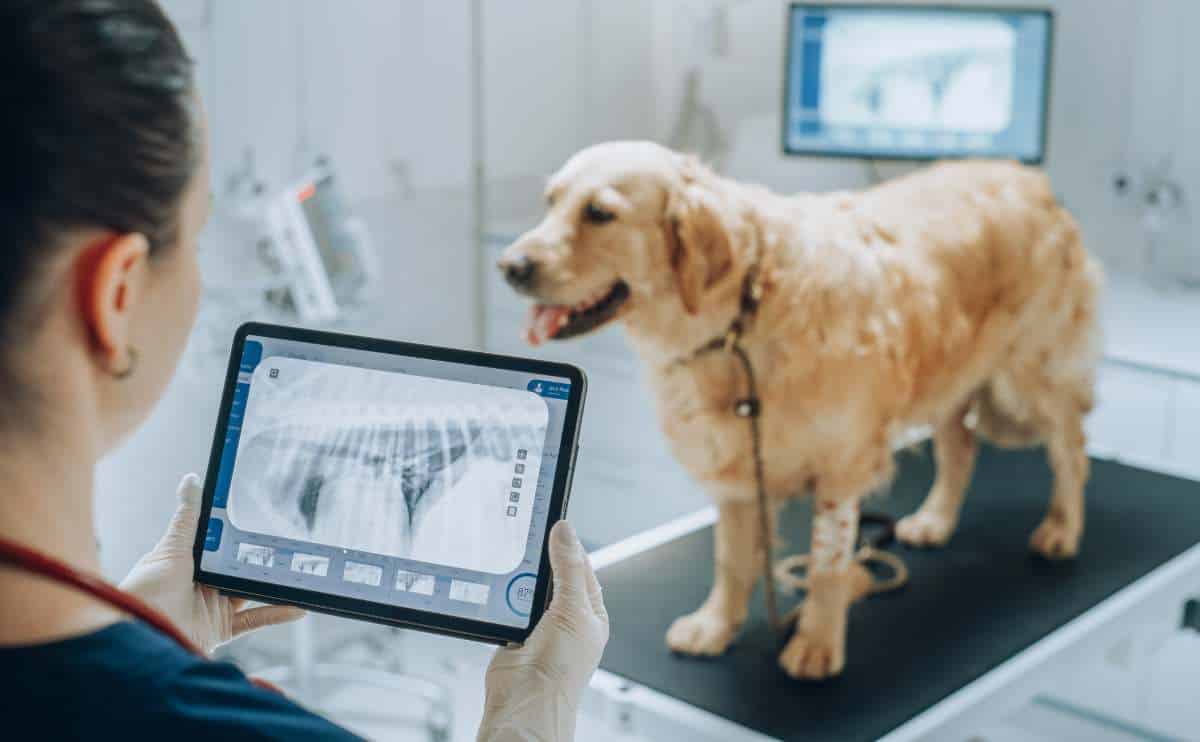This content was reviewed by our licensed insurance agent, Michelle Schenker.
When you purchase through links on our site, we may earn a commission. Here’s how it works.

Sometimes our dogs need veterinary testing to help diagnose and treat a condition. Unfortunately, this can be unsettling and expensive if you’re unprepared for a hefty bill. You’re not only anxious about your dog’s health, but you’re now worried about how you’ll pay for the vet expenses. Find out when pet insurance covers magnetic resonance imaging (MRI) and when it’s excluded.
What Is An MRI?
An MRI (magnetic resonance imaging) provides images of the body’s tissues and helps veterinarians evaluate your dog’s nervous and musculoskeletal systems. MRIs are best suited for imaging soft tissues, like the brain, muscles, ligaments, tendons, spinal cord, and intervertebral discs.
MRIs can detect abnormalities missed on a CT (computerized tomography) scan or another diagnostic test. An MRI also allows imaging from all three planes of the body (top to bottom, left to right, and front to back) without moving the patient.
The patient needs to be still during an MRI, so dogs are placed under general anesthesia. Before administering anesthesia, blood samples may be taken to evaluate red and white blood cell counts, electrolyte levels, and liver and kidney function. This can help assess any concerns with placing your dog under anesthesia. After your dog is safely under anesthesia, the MRI takes between 45 minutes and two hours.
When Will Pet Insurance Cover MRI Scans?
Pet insurance covers MRI scans for procedures of eligible accidents and illnesses. Eligible accidents and illnesses include conditions that weren’t diagnosed or presented before the pet insurance policy’s effective date and applicable waiting periods.
When Are MRIs Excluded From Pet Insurance?
MRI scans are excluded from coverage by pet insurance companies if the need is associated with a pre-existing condition or an excluded accident or illness.
For example, let’s say your dog was diagnosed with a seizure condition before you enrolled her in pet insurance. A few months after you purchased pet insurance, she needed an MRI to do further diagnosistic analysis or treatments for her seizures. In this instance, the MRI would be ineligible for coverage because it’s associated with a pre-existing seizure condition.
Best Pet Insurance For MRI Scans
Fortunately, you have many options for pet insurance companies that cover MRIs associated with a new diagnosis. Our pet insurance comparison allows you to analyze the top pet insurance providers. We have comparison tables for plan customizations, coverage and exclusions, waiting periods, age limitations, and sample price quotes to help you see how the pet insurance companies differ. All of the current insurance policies cover MRIs as long as it is not related to a pre-existing or excluded condition. Be sure to read the fine print before you sign up for a new insurance policy so you can be sure your needs are addressed.
Tagged With: Reviewed By Insurance Agent

